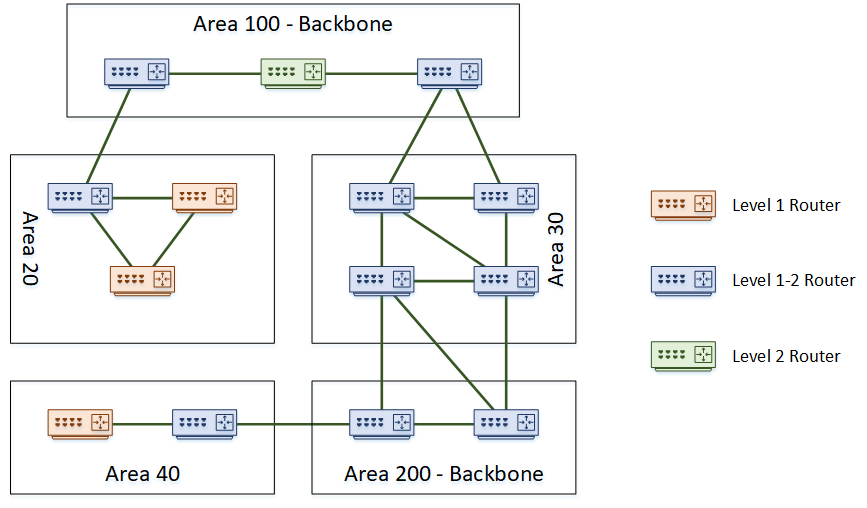Like OSPF, IS-IS uses areas. Areas can be either a backbone area, or normal area. To support this concept, a router may be one of the following types:
- Level 1 – A router in a normal area that does not connect to another area
- Level 1-2 – A router in a normal or backbone area that connects different areas
- Level 2 – A backbone router that does not connect to other areas
The topology below shows an example of a network with several areas.
There are a few interesting points in this topology. Notice that the backbone area is not restricted to being ‘area 0’ like in OSPF. In IS-IS, any area number can be the backbone. Also notice that it is possible to partition the backbone. In this topology, both area 100 and area 200 are the backbone.
A further point of interest is that area boundaries are not on the routers themselves. Rather the area boundaries are between routers. This is different to OSPF, where an ABR or ASBR router is the boundary.


No comments:
Post a Comment